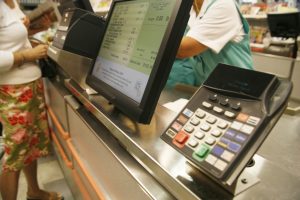It’s a race apparently. At the beginning of every month, Crystal Cork, single mother of five, heads to the ATM at the beginning of every month to get to an ATM to access her SNAP benefits. Hopefully access them. Because heading to another ATM somewhere else in the country is a fraudster racing to get those same benefits. Cork has been victimized many times by these thieves. Her stolen benefits came from CalWorks, a $7.2 billion annual program that provides cash to low-income families. But scammers across the country target the Supplemental Nutrition Assistance Program (SNAP), which is projected to distribute $127 billion in grocery allowances for residents in or near poverty this year.
The technology that secures EBT cards is woefully outdated, allowing criminals to drain millions of dollars from accounts before the neediest people see a dime. And even when they find out, they may not report the theft. In most states, once benefits are gone, they’re virtually impossible to get back. No technology upgrade is seen on the horizon. And the stolen funds are only getting larger. In the summer of 2021, the California Department of Social Services was spending about $100,000 a month restoring benefits that residents had reported stolen through skimming (or text and email phishing scams).
Through March of this year, the figure had grown to an average of $10 million. In December, U.S. Congress approved legislation in response to a national rise in theft of SNAP benefits. The law authorized states to make use of federal funding to replace benefits stolen from October 1, 2022, through September 30, 2024. The question is, until we actually update the technology that SNAP benefits run on, who is to say the fraudsters won’t steal the federal funding that has been established to replace the state benefits?
Today’s Fraud of The Day is based on article “EBT Skimmers Are Draining Millions of Dollars From the Neediest Americans” published by Bloomberg on June 23, 2023
On a warm September night in Green Bay, Wisconsin, Crystal Cork started her Mercury Mountaineer and made her way to a nearby US Bank ATM. Back in Sacramento, California, where Cork and her five children live, the clock had just struck 12 a.m. Around midnight at the beginning of every month, millions of dollars in welfare payments traditionally flow into the bank accounts of low-income families across the US. Cork was driving through Green Bay in the middle of the night in a race to withdraw her money before anyone else got to it.
Recently, Cork had encountered a peculiar and stressful problem: Other people had apparently gained access to her monthly benefits. In three separate instances, she’d arrived at an ATM to withdraw these benefits in cash only to discover the bulk of her balance had already been siphoned away. According to bank records, the mystery withdrawals had taken place at ATMs she’d never visited.




